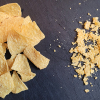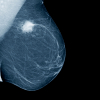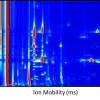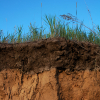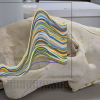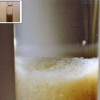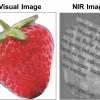Maren Fiege,a Sára Harkai,b,c Diana Weigel,b Michael Pütz,b Hans Meyer,d Heinz Pritzke,e Sabine Neuberger,f Christian Neusüß,f Eva Woltmann,c,g Carolin Huhn,g Andrey Bogomolov,d Björn Fählerh and Klaus Schürmanna,*
aLabCognition Analytical Software GmbH & Co. KG, Leyendeckerstr. 33, 50825 Köln, Germany.
http://www.labcognition.com
bBundeskriminalamt Wiesbaden, Kriminaltechnisches Institut, Fachbereich KT-34 – Toxikologie
cWestfälische Wilhelms-Universität, Münster, Institute for Inorganic and Analytical Chemistry
dJ&M Analytik AG, Willy-Messerschmitt-Str. 8, 73457 Essingen, Germany
eGlatt Systemtechnik GmbH, Grunaer Weg 26, 01277 Dresden, Germany
fAalen University, Aalen, Germany
gForschungszentrum Jülich, Jülich, Germany
hPharma Test Apparatebau AG, Siemensstr. 5, 63512 Hainburg, Germany
Introduction
Recent years have seen a steadily increasing danger to the general public from counterfeit medicines, illegal doping agents and illicit drugs. Aside from the obvious health hazards for the consumer, the trafficking of these drugs is directly related to organised crime and international terrorism.1
With Germany being located in the heart of central Europe, a lot of trade to and from the EU goes through its seaports and airports. While many suspicious drug samples are found by police and customs, their ability to analyse a sample on site is usually limited, requiring them to send a seized specimen to a central laboratory. This may take several days, often longer than the maximum time a shipment may be held back according to law, so it is possible for shipments of illegal drugs to escape law enforcement due to logistical shortcomings.
Thus, the objective of the MIME joint project was to develop a multi-modal, transportable inspection system, including intelligent data processing and evaluation, for fast spectroscopic recognition of illicit drugs and counterfeit medicines. At the same time, the inspection system had to be easy to use for a non-spectroscopist, e.g. a customs officer. The law enforcement officers would be able to drop a specimen (i.e. tablets, solids or liquids) into the analyser and receive a simple answer (genuine or not) to establish an initial suspicion, allowing them to withhold a shipment for further investigation. In addition, the composition of the drugs can provide valuable information on its origin, helping law enforcement in the investigation.
Hardware
During the three-year course of the project, a demonstrator analyser was built. The demonstrator (see Figure 1) consists of a stainless steel casing on wheels that can be completely closed except for an opening with a rotary plate on the side. The plate features 12 wells where tablets can be inserted for fully automatic analysis. Different inlays ensure central positioning of the samples within the wells. Other solid or liquid samples need to be handled manually.

Figure 1. Inside the demonstrator as seen through the open front door, which is closed during normal operation. There is a receptacle for finished samples (not indicated) underneath the physical tester. Photo courtesy of BKA.
Once the workflow has been started, the plate will rotate to bring the tablet inside the casing, where a suction picker with a silicone tube will pick up the tablet and transport it to the measurement position above the probe head (Figure 2). Several optical spectroscopy techniques were investigated; as liquid samples were initially to be considered in addition to solids, Raman was chosen instead of mid-infrared. It was found that a combination of ultraviolet (UV), visible (Vis), fluorescence, near infrared (NIR) and Raman spectroscopy offered the best results in terms of spectrum quality, selectivity and ability to investigate coatings as well as the inside of a tablet through the coating.

Figure 2. Tablet (pink) held above the probe head (bottom) by the suction picker (top). The reflection of the Raman laser can be seen as a red dot on the probe head below the tablet. Photo: M. Fiege.
UV, Vis, fluorescence and NIR pushbroom technology are used to allow analysis of 5 × 5 spots on the surface of a given tablet; Raman spectroscopy was performed on five different spots by moving the tablet across the probe head. In addition to spectroscopic techniques, the tablets are photographed on both sides, weighed and their dimensions as well as hardness are measured mechanically. The entire process takes approximately three to four minutes per tablet and requires no user interaction once the workflow has been triggered.
The selection and investigation of the spectroscopic techniques used in the project has been documented and published separately.2,3,4 Additional investigations were carried out on heroin5 and sassafras oils.6
The demonstrator casing as well as the tablet transportation system was built by Glatt Systemtechnik GmbH (Dresden, Germany). The probe head for the optical measurements (multi probe head UV/Vis-NIR-Raman-fluorescence) was built by J&M Analytik AG (Essingen, Germany), who also built the 5 × 5 fibre optic light guide and the Tidas S Raman 785 spectrometer. For the UV/Vis and fluorescence measurements, a Specim (Oulu, Finland) Spectral Camera PS-FW-11-V10E-OEM (400–1000 nm) was used. An additional UV pushbroom imager allowing measurements at l < 300 nm (Spectral Imaging System Blue Eye UV; 190–380 nm) was provided by J&M and obtained from inno-spec GmbH (Nürnberg, Germany); the NIR pushbroom (Spectral Imaging system red eye NIR 1700; 950–1700 nm) was also provided by inno-spec. A combined device for the physical tests (weight, size, hardness) was built by Pharma Test AG (Hainburg, Germany), consisting of a Mettler Toledo (Columbus, OH, USA) WKR204C-S balance, a Sony (Tokyo, Japan) ILX5538 CCD linear sensor and a Celtron STC-220KgSTT force sensor (Vishay Precision Group, Malvern, PA, USA). Control of the shutters and lamps was achieved using an IO Warrior board (Code Mercenaries Hard- und Software GmbH, Schönefeld, Germany). Light sources used were: UV deuterium light source 30 W (J&M), halogen light source SIG 20 W (J&M) and an FQSS266-Q2 laser (266 nm) with SMA from CryLaS (Berlin, Germany).
The software challenge
The multitude of techniques used, as well as the plethora of different—legal and illegal—drug products on the market brought up a number of challenges:
- The different instruments within the demonstrator system must be controlled centrally.
- Reference data need to be kept and managed for the different drug products.
- The data acquired by the demonstrator (at least 105 spectra per tablet not counting dark and reference spectra, plus physical data and pictures, plus metadata) must be stored, managed and analysed.
- The entire system must be easy to use even for a novice user.
To address these challenges, a software system was needed that allowed the different instruments comprising the demonstrator to be controlled, acquiring and storing all of the produced data centrally, and providing an easy way to perform the chemometric evaluation without requiring expert knowledge of spectroscopy or chemometrics. On the other hand, the system also needed to allow expert users to maintain reference data, provide parameters and manage the chemometric models. Comprehensive security features were required in order to ensure that only authorised users can access the reference data and chemometric models or perform evaluations.
The software solution
In the course of the MIME project, LabCognition (Köln, Germany) developed a multi-tier software platform with a web-based user interface that can accommodate the different usage scenarios for expert and routine users described above. The MIME software platform can be used both on a single workstation, as well as over the network as a distributed system. The platform consists of a number of key software architecture components.
A Microsoft® SQLServer database with a novel, adaptable structure that can be customised to hold metadata, spectra, chemometric models, product information, images and other information, and accurately represent connections and relationships between data while providing appropriate security mechanisms. As a proof of concept, two different data structures were set up. The first one can be used for information management on original products as well as seized counterfeits, including information on where a seizure was taken as well as case numbers etc. for logically linking this information to other case management systems used by law enforcement. The second one can be used to collect all information gathered during the measurement campaigns and field test, including the spectra acquired with the demonstrator, perform chemometric analyses and display the results. The customisation can be done through configuration without the need to change the software program code.
An application and web server layer handles all communication (including data import and export to and from the file system as well as instrument communication) and data processing. This layer internally interfaces to previously existing components from LabCognition’s “panorama” software product providing instrument control, file import using different data formats and chemometric processing. It is also possible to interface with third party components such as MATLAB® (The MathWorks, Natick, MA, USA) or PeaXact (S-PACT GmbH, Aachen, Germany). The web server component used is Microsoft® Internet Information Services (IIS).

Figure 3. Representation of a measured drug product (Allobeta 100) in the MIME software platform. Clicking the button “Verify Allopurinol Products” will start the analysis workflow; results of previous runs are shown at the bottom left.

Figure 4. Screenshot of the MIME software platform displaying the results of the identification for the drug Allobeta 100. Positive results are displayed as green squares, negative results as red squares. The window on the right shows a heat map of the 5 × 5 NIR results. The numbers under the coloured squares indicate the number of the measurement and the respective spectral residual.
A web-based user interface for routine and expert users with “apps” that answer specific questions, e.g. to test authenticity of a drug product (see Figures 3 and 4). Depending on the underlying database structure (vide supra), the web UI can be used by expert users to maintain, manage and approve reference data and chemometric models, or by routine users to acquire spectra and run chemometrics-based analyses on the measured data (see Figure 5). While the basic functional principles of the apps are included in the database model, specific settings such as mathematical (pre-)processing as well as new calibration models can easily be changed and updated by authorised users, making the system easily adaptable to new tasks.

Figure 5. Schema of analysis workflow within the MIME software platform.
In addition, the panorama desktop software was used as an expert tool to create chemometric models, perform advanced instrument control and optimise measurement parameters during the field tests in order to provide added interactive control over instrument parameters.
Reference data on genuine drug products were acquired at the BKA in Wiesbaden, Germany, using the demonstrator. Based on these data, chemometric PCA models for specific drug products were created by J&M Analytik AG using panorama and uploaded into the MIME software platform. A field test with potential end users was performed at BKA Wiesbaden. Participants were pleased with the combination of methods, the automation, easy storage of samples as court exhibits and non-invasiveness of measurements.7
Outlook
The MIME project successfully proved the suitability of multimodal spectroscopic analysis for counterfeit drug protection and resulted in a feasible, user-friendly demonstrator system. The next step will be to fill the database with more reference data and to expand the field tests to a larger scope and to further optimise the system based on user feedback. Furthermore, additional identification will help in making the gathered evidence stand in court. In the long term, it might be useful to miniaturise the analyser so an officer could carry it. Such a miniaturised system might only include a reduced set of techniques as appropriate to the use at hand.
The MIME software platform has proven versatile enough to accommodate the project’s requirements ranging from simple data management to advanced spectrum evaluation, while proving user-friendly enough to be easy to use for novice users. The general concepts implemented in the system are not restricted to the particular use of counterfeit drug detection, but can be applied to a wide range of scenarios from data management through counterfeit pesticide analysis on to online scenarios such as PAT, waste water monitoring, food analysis and more. The software will be commercially available by LabCognition as a scientific information system under the name of “SciGear”, providing scientific information management as well as serving as a platform for web-based spectroscopy apps.
Acknowledgements
The authors acknowledge the partners within the MIME project: J & M Analytik AG, Aalen University, Glatt Systemtechnik GmbH, Pharma Test AG, Bundeskriminalamt Wiesbaden (BKA), University of Münster and FZ Jülich and financial support in the course of the announcement “Sicherung der Warenketten” of the Federal Ministry of Education and Research (BMBF) within the scope of the program “Forschung für die zivile Sicherheit” of the Federal Government (FKZ 13N12006 to FKZ 13N12012).1
References
- Bundesministerium für Bildung und Forschung, Multimodales Mustererkennungssystem zum Schutz der Bevölkerung vor organisierter Arzneimittelkriminalität (MIME), Project Outline. http://www.bmbf.de/pubRD/Projektumriss_MIME_.pdf; http://www.bmbf.de/de/15034.php (in German).
- S. Neuberger and C. Neusüß, “Determination of counterfeit medicines by Raman spectroscopy: systematic study based on a large set of model tablets”, J. Pharm. Biomed. Anal. 112, 70–78 (2015). doi: http://dx.doi.org/10.1016/j.jpba.2015.04.001
- E. Woltmann, H. Meyer, D. Weigel, H. Pritzke, T.N. Posch, P.A. Kler, K. Schürmann, J. Roscher and C. Huhn, “Applicability of UV laser-induced solid-state fluorescence spectroscopy for characterization of solid dosage forms”, Anal. Bioanal. Chem. 406, 6347–6362 (2014). doi: http://dx.doi.org/10.1007/s00216-014-8074-3
- A. Taichrib, M. Pioch and C. Neusüß, “Multivariate statistics for the differentiation of erythropoietin preparations based on intact glycoforms determined by CE-MS”, Anal. Bioanal. Chem. 403, 797–805 (2012). doi: http://dx.doi.org/10.1007/s00216-012-5924-8
- M. Schäffer, B. Ahrens, T. Rössler, S. Hasselbach-Minor, M. Pütz, T. Schwemer, M. Sklorz and R. Zimmermann, “Characterization of a heroin manufacturing process based on neutral and acidic impurities by combining complementary information from two-dimensional gas chromatography and high resolution mass spectrometry”, Anal. Bioanal. Chem., in press (2015).
- M. Schäffer, T. Gröger, M. Pütz and R. Zimmermann, “Forensic profiling of sassafras oils based on comprehensive two-dimensional gas chromatography”, Forensic Sci. Intl. 229, 108–115 (2013). doi: http://dx.doi.org/10.1016/j.forsciint.2013.03.046
- S. Harkai and D. Weigel, Feldmesskampagnen im Rahmen des Projektes “MIME – Multimodales Mustererkennungssystem zum Schutz der Bevölkerung vor organisierter Arzneimittelkriminalität und zur Bekämpfung des internationalen Drogenhandels“, internal project report (2015).
SE Q&A: Klaus Schürmann, LabCognition
Antony N. Davies
Strategic Research Group – Measurement and Analytical Science, Akzo Nobel, Deventer, the Netherlands
SERC, Sustainable Environment Research Centre, Faculty of Computing, Engineering and Science, University of Glamorgan, UK
TD Morning Klaus, the project reported in the column around the development and testing of an advanced spectroscopic analysis system seems like a great example of teamwork between SMEs and the public sector. Is this an example where only SMEs can possibly have the flexibility to deliver on such innovative projects?
KS The focus of the MIME project was very ambitious since an easy-to-use, tailored but configurable software solution was requested. It had to be derived utilising multiple spectroscopic techniques, considering highly specific analytical problems and included nearly unpredictable research efforts. Such preconditions are usually not big companies’ favourites. We are not constrained by questions such as “does this product fit into our global strategy?” or “Can we reach six-figure turnover as a result of this development?” So the answer is definitely “Yes”.
TD Yes, I’ve been annoyed in the past by the failure of bigger companies to grasp opportunities for innovation and product improvement with answers like “yes, good idea but it would cause too much noise in our processes!”
Your company and the key experts within it have a great pedigree—coming from a long line of well-networked SMEs serving the spectroscopic community in Europe and beyond. Is it more satisfying working in such an environment?
KS We are lucky to have a homogeneous, interdisciplinary and very creative team working with us. This is the essential basis and motor for our innovation. We can quickly adapt to new incoming requests having short decision pathways where everybody participates and contributes with ideas in a highly agile working process. In research-oriented projects like MIME, this is critical to our success and it is exactly what employees like most about working for us.
There is also different mindset when we are key providers to other SMEs, where we recognise that there is a mutual dependence—if we continually succeed in delivering exactly what these key customers want, then they will return again and again. They are also not constrained by having to take the lowest possible quote, which can often lead to delivery problems and longer-term difficulties when a short-term, under-funded project fails to deliver in full or robustly enough.
TD On a technical front, are there specific tools or techniques that your team uses to keep abreast of the ever-changing IT landscape?
KS As a SME we work with state-of-the-art technologies and development tools, but we also have the flexibility to try out new technologies as soon as they are available. We build strategic alliances with other companies, research institutes etc. in order to broaden our expertise. By sticking to standard software environments and standardised data formats and processing we can ensure the longevity of what we develop and don’t force our customers to continually update or upgrade their solutions just to keep the systems running.
TD And on a people front, would you recommend spectroscopists starting out on their career path to follow a similar route to you and your team and look at the SME sector for a better work–life balance? Clearly, the changeover of staff in your organisation has been very small compared to what we see in many of the industry giants, so this style of working obviously suits your team?
KS Yes, working for a SME is a little bit like a family business with all its highs and lows. Employees are well-accepted family members working closely together in small teams they feel very comfortable with. The idea of being equitable within the team removes all competitiveness usually found in bigger companies—everyone can contribute… but then again, everyone is expected to contribute! Hence employee turnover is close to zero. However, it’s not everybody’s cup of tea, but for us it has worked well for over 10 years.
TD Long may that continue! Thanks for finding time for a brief chat and all success with your next innovation!
 Klaus Schürmann is Managing Director of LabCognition Analytical Software GmbH & Co. KG in Köln, Germany, responsible for marketing and product innovation. His particular interests are creating easy-to-use spectroscopy software solutions.
Klaus Schürmann is Managing Director of LabCognition Analytical Software GmbH & Co. KG in Köln, Germany, responsible for marketing and product innovation. His particular interests are creating easy-to-use spectroscopy software solutions.








